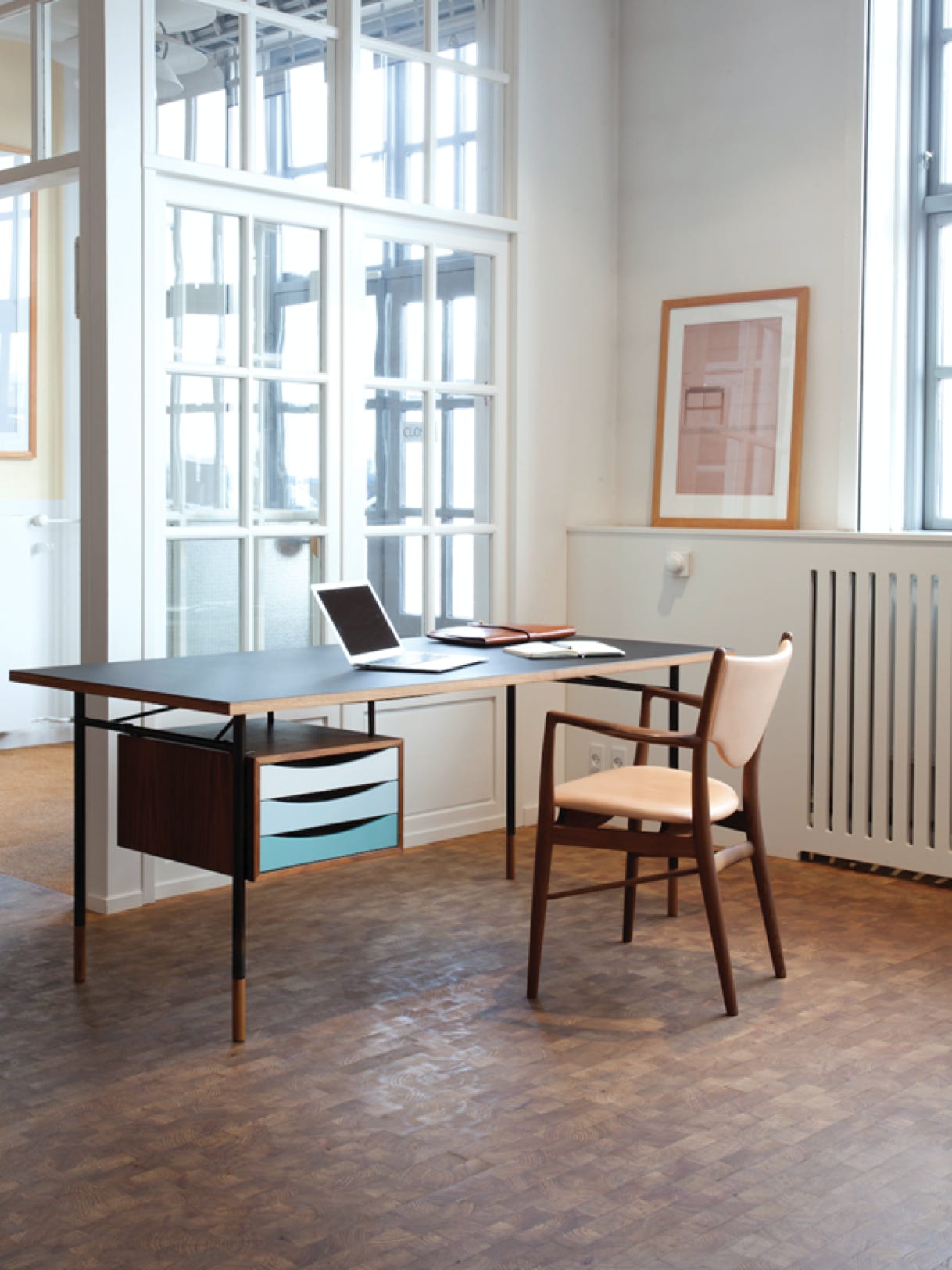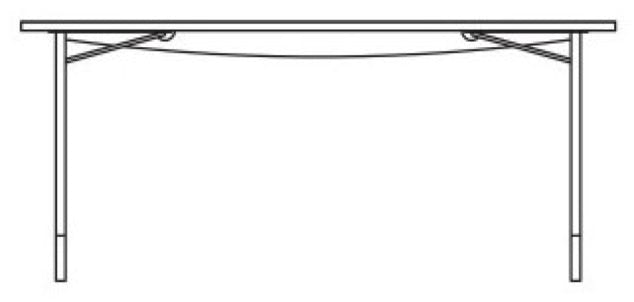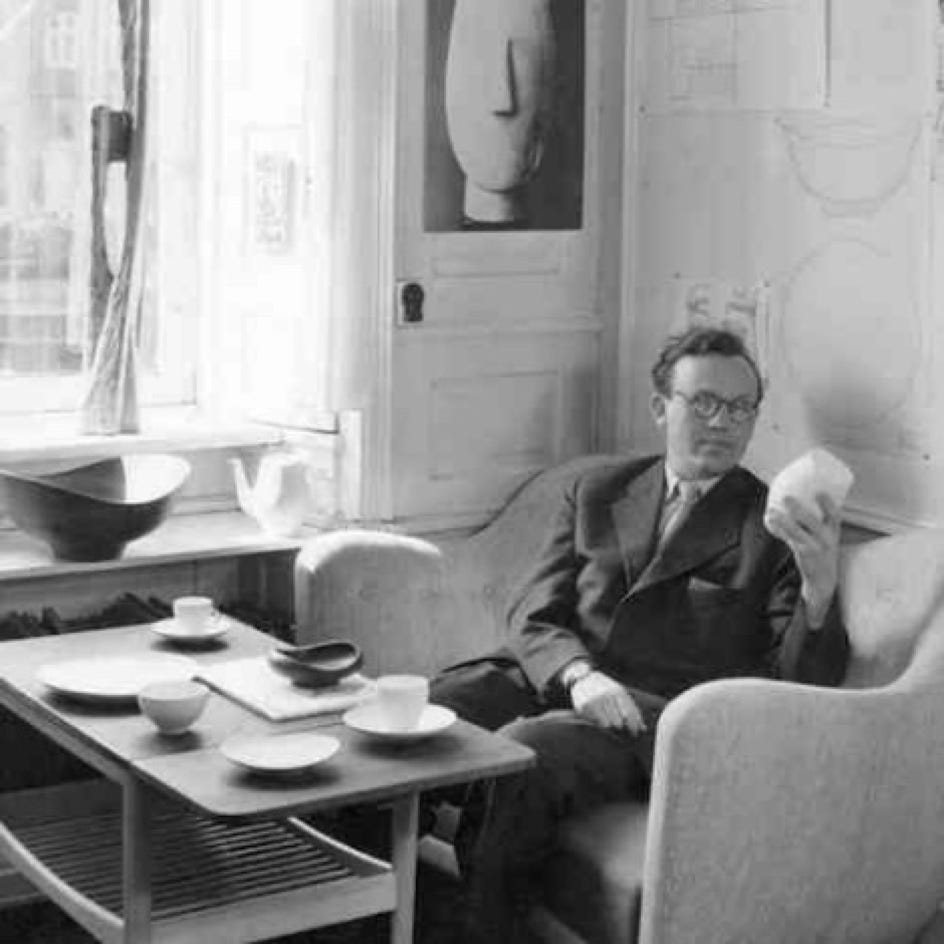15% off with DESIGN15

Over the course of his career, Finn Juhl has designed various tables with almost invisible legs in burnished or painted steel with wooden toes. Among them, the Nyhavn table and the Nyhavn Desk, which he designed for his design studio located at the prestigious 33 Nyhavn Street, in the center of Copenhagen. When he moved his studio to 38 Sølvgade in 1957, these same tables were still in use.
The Nyhavn Desk is a piece of furniture with very simple lines with a floating lightness, enhanced with delicate details, such as the wooden toes and the block of drawers colored in cold or warm colors taken from Goethe's color wheel. The drawer unit is attached to brackets to further emphasize the floating lightness of the table.
Dimensions 136x68xH72,5cm, 170x85xH72,5cm or 190x85xH72,5 cm
Tabletop veneer or linoleum
Frame burnished or painted steel in black, orange or light blue with wooden toes


136 x 68 cm
from
170 x 85 cm
from
190 x 85 cm
from
Tray unit
from
oiled walnut, light blue frame, cold colors tray unit
oiled oak, orange frame, warm colors tray unit
white oiled oak, orange frame, cold colors tray unit
white oiled oak, black linoleum, black frame, cold colors tray unit
oiled oak, black linoleum, black frame, warm colors tray unit
oiled oak, black linoleum, black frame, cold colors tray unit
white oiled oak, black frame, warm colors tray unit
white oiled oak, black frame, cold colors tray unit
oiled oak, black frame, warm colors tray unit
oiled oak, black frame, cold colors tray unit
oiled walnut, black linoleum, black frame, warm colors tray unit
oiled walnut, black linoleum, black frame, cold colors tray unit
oiled walnut, black frame, warm colors tray unit
oiled walnut, black frame, cold colors tray unit
white oiled oak, black linoleum, light blue frame, warm colors tray unit
white oiled oak, black linoleum, light blue frame, cold colors tray unit
oiled oak, black linoleum, light blue frame, warm colors tray unit
oiled oak, black linoleum, light blue frame, cold colors tray unit
white oiled oak, light blue frame, warm colors tray unit
white oiled oak, light blue frame, cold colors tray unit
oiled oak, light blue frame, warm colors tray unit
oiled oak, light blue frame, cold colors tray unit
oiled walnut, black linoleum, light blue frame, warm colors tray unit
oiled walnut, black linoleum, light blue frame, cold colors tray unit
white oiled oak, black linoleum, orange frame, warm colors tray unit
white oiled oak, black linoleum, orange frame, cold colors tray unit
oiled oak, linoléum noir, orange frame, warm colors tray unit
oiled oak, linoléum noir, orange frame, cold colors tray unit
oiled oak, orange frame, warm colors tray unit
oiled oak, orange frame, cold colors tray unit
oiled walnut, linoléum noir, orange frame, warm colors tray unit
oiled walnut, linoléum noir, orange frame, cold colors tray unit
oiled walnut, orange frame, warm colors tray unit
oiled walnut, orange frame, cold colors tray unit
Finn Juhl

As a teenager, Finn Juhl (1912-1989) wanted to become an art historian, having a passion for the fine arts since childhood. His father stopped him and Finn Juhl started architectural studies. Later, when his fame as a designer of furniture acquired, he speaks of himself as an autodidact, in reference to this upset vocation that forced him to walk intellectually on a lonely way. His style owes much to this singular trajectory, with its non academic interpretation of art visible in his work. Finn Juhl started his studies in 1930, a key period which saw the birth of modern design and furniture.
His modern offices in central Copenhagen was greeting his visitors with a huge Japanese fish in paper, symbol of imagination. Rather than thinking in terms of practical construction, Finn Juhl had the mind-set of a sculptor, when he shaped a piece of furniture. In the 1940s and 1950s, this way of working had never been seen before. His ambition was to design furniture with movement and life.
Juhl took pride in making both the structurally supportive elements of the furniture and the seated person look as though they are floating. In some of his chairs, the backrest and the seat are almost invisibly joined, as if they were clouds floating through the room.
In creating his furniture, Finn Juhl worked with two elements: The carrying element, and the carried. He eventually became known for his special ability to separate the bearing parts from the borne. This is one of many examples of how he broke free from conventional working methods and found his inspiration in art.